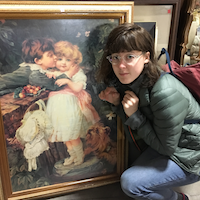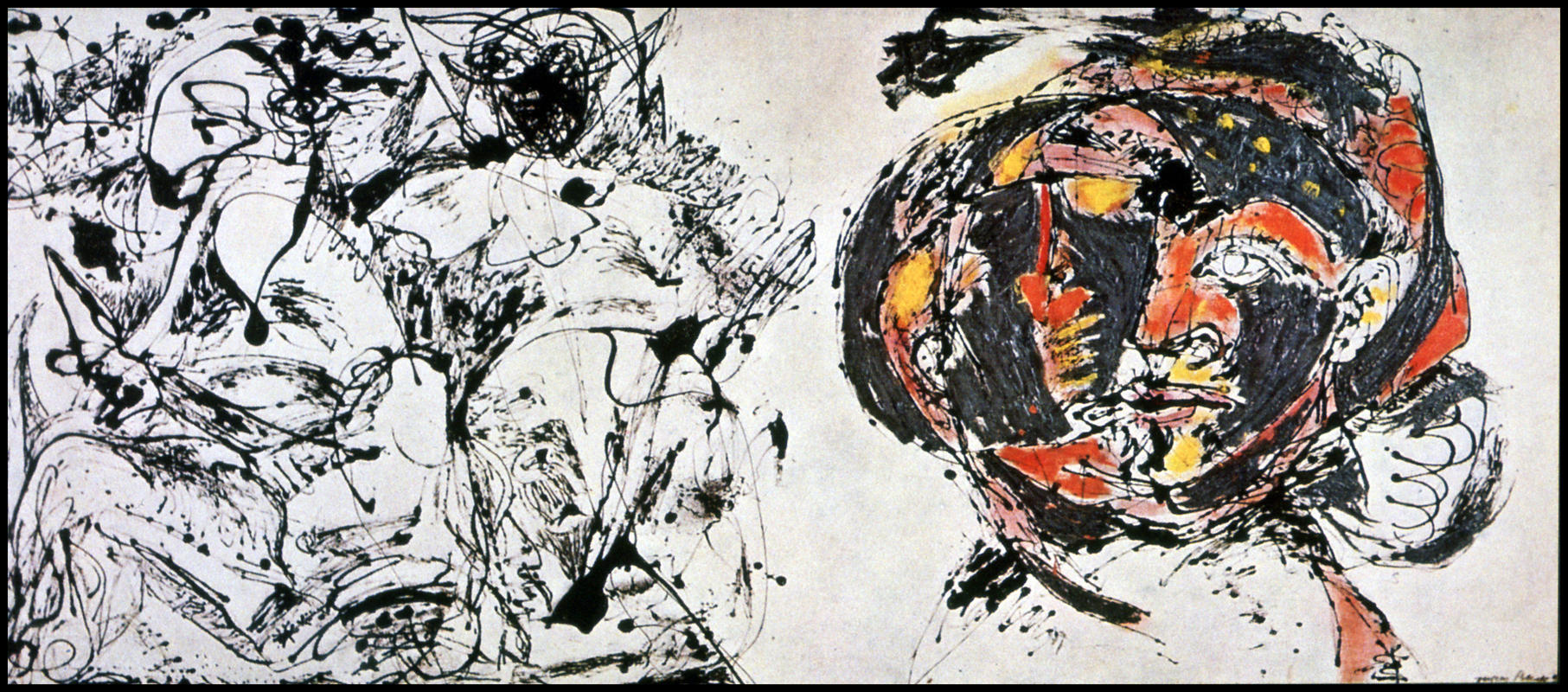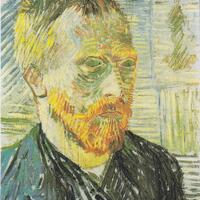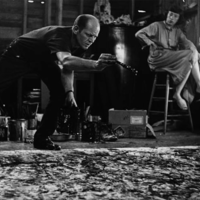More about Portrait and a Dream
- All
- Info
- Shop

Contributor
Although at first glance his pieces often seem like the delirious scribbles of a three-year-old, Jackson Pollock’s painting Portrait and a Dream, is clearly the work of a master.
Something that historians don’t want you to know, however, is that there is a part of Pollock’s mind that does parallel that of a child: our boy Jackson had a penchant for penises, or rather, what comes out of them. That’s right, I’m talking that about that sweet urine.
Pollock was outed by a family neighbor, who recounted a story in which, Jackson, a spry young boy, walks into a field on a clear day to see none other than his own father peeing in patterns onto a rock. He thinks to himself, “I want to do the same thing when I get older.” Always the go-getter, he found a way to turn his dreams into reality, only with paint instead of pee. You see, it’s often suggested that this early memory triggered him to create his iconic “drip paintings” — a technique where paint is poured directly onto a canvas or dripped from the end of a paint brush, similar to the way that pee drips, pours and sprays out of a penis. Are you weirded out yet? It gets worse. Andy Warhol later paid homage to the technique by dripping actual pee for his Oxidation series.
Pollock also loved to pee in public. A particularly interesting public display of urination took place during a party at Peggy Guggenheim’s house. The notoriously seductive art collector and patron played sugar mama to Pollock throughout his entire career. They were celebrating the completion of a 8’x19’ mural that Peggy commissioned from Pollock. In an effort to fit the mammoth painting (the largest he ever painted!) onto her apartment wall, she decided to crop the sides. A hysterical Pollock got his revenge by whipping out his ding dong and taking a shot at her fancy fireplace. Other pee spots include: flower pots, Rockefeller Square, and paintings sent to disliked art dealers.
Pollock’s alcohol-fueled depression likely had a hand in his public peeing spectacles. Although his drip paintings had been successful from their beginning in 1947, as his depression worsened, he wanted to take them to the next level by giving his work meaning beyond childhood memories. During the last six years of his life, he began a series of paintings, including Portrait and a Dream, that hid recognizable images within dripping. This painting shows us— wait for it— a portrait and a dream! Many have guessed that the colored blob on the right is a self-portrait, while the jumble on the left, the dream, almost looks like a woman’s form if you squint hard enough. Nobody can quite decide what he was trying to depict here, but it has been likened to:
-
A wet dream
-
A matriarch decapitating chickens
Pollock painted Portrait and a Dream as a last-ditch effort to make sense of the constant chaos in his mind during his last years. I would give you a long-winded psychological explanation for why Pollock painted the way he did but I won’t because there is one thing I’m certain of: it always comes back to pee.
Sources
- Bunker, John, “John Bunker Writes on Jackson Pollock at Tate Liverpool,” ABACRIT: Discursive Argument on Abstract Painting and Sculpture, last modified August 7, 2015, https://abcrit.org/2015/08/07/13-john-bunker-writes-on-jackson-pollock-…
- Friedman, Bernard Harper. Jackson Pollock: energy made visible. New York: Da Capo Press, 1995.
- Genter, Robert. Late modernism: art, culture, and politics in Cold War America. Philadelphia (Pa.): University of Pennsylvania Press, 2010. 314.
- Larson, Kay. "Jackson Whole." New York Magazine, May 21, 1990.
- Muchnic, Suzanne. “Jackson Pollock Biography-- Just too personal?” L.A. Times, Febuary 01, 1990. http://articles.latimes.com/1990-02-01/entertainment/ca-1463_1_jackson-…
- Wood, Paul. Varieties of Modernism. London, England: Yale University Press, 2004.


















